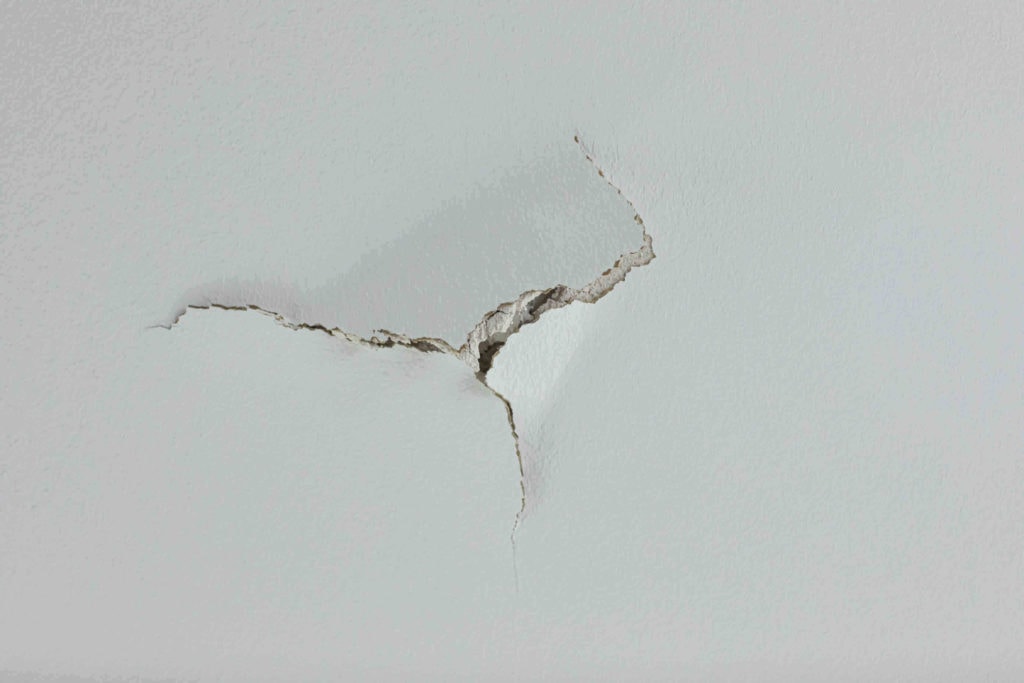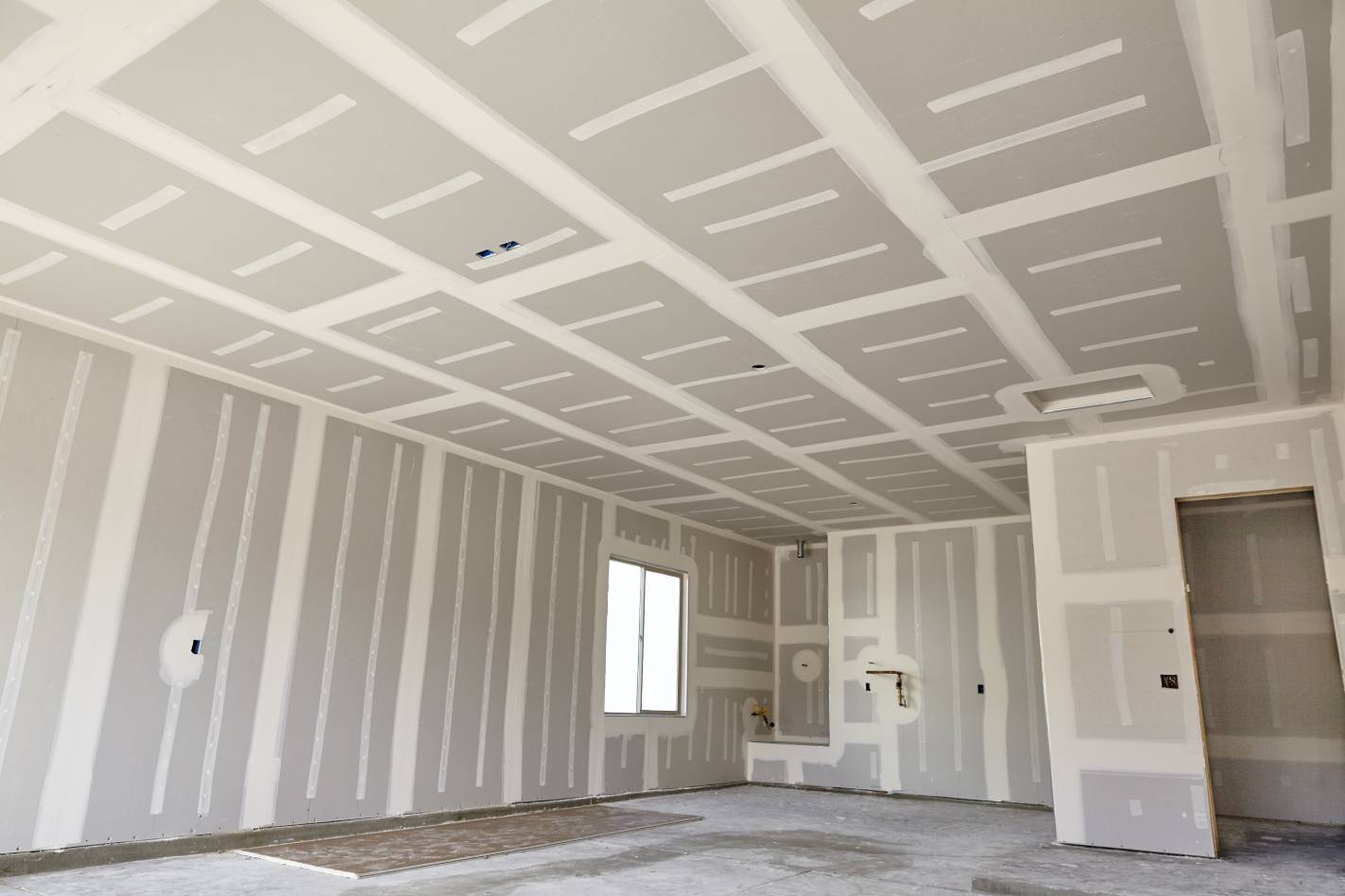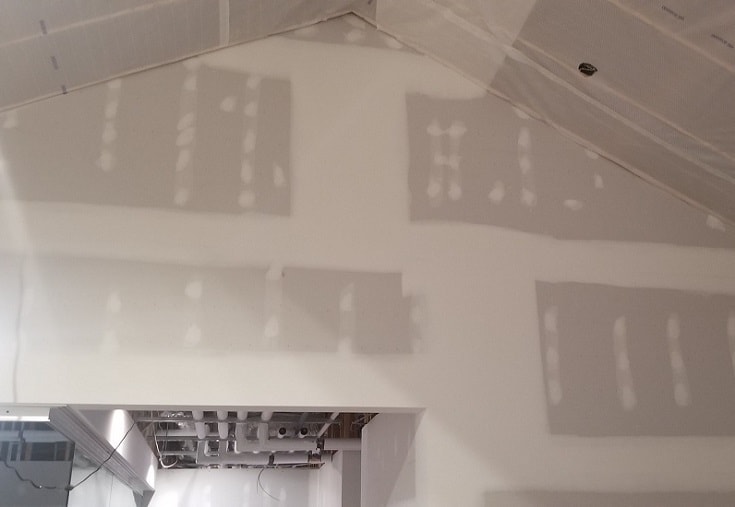How Much Does It Cost to Fix a Hole in Your Wall? Drywall Repair Costs in 2025
-

- Last updated:

Eventual dents, holes, nail pops, and cracks are inescapable facts of life when you have drywall, and they’ll stick out like a sore thumb no matter how minor.
Many factors will determine the final costs to fix holes in your wall, including the hole size, cause of the damage, and who performs the repair. Small DIY repairs will often cost less than $100, while professional repairs range from $200–$550 on average. We’ll break down the cost to repair drywall holes and offer tips on how you can save the most time and money possible on maintenance.
 The Importance of Fixing Holes in Your Wall?
The Importance of Fixing Holes in Your Wall?
It doesn’t take much to pop a hole in drywall, so damage is commonplace. Damage can arise from doorknobs, accidents while moving furniture, popped nails and screws, rodent claws, and fits of rage, among other things.
Apart from the cosmetic drawbacks of having holes in your walls, they can also allow drafts and pests into your room. By repairing your drywall quickly, you insulate your home, making it more energy-efficient and protected from insects, moisture, and other hazards.
Aside from holes, you may also need to repair drywall that suffered moisture, mold, or fire damage. If you notice discoloration, soft spots, dampness, swelling, or water stains on the drywall or on the floor where it meets the wall, it likely means there’s water damage to address. It’s crucial to remove, repair, and replace your drywall immediately to keep mold from developing and prevent water damage to your home’s structure.

How Much Does It Cost to Fix a Hole in Your Wall?
Hiring a professional can cost from under $100 to over $1,000, depending on the extent of the damage to your drywall. For a small hole only a few inches wide, a contractor will likely charge a flat rate of $50–$75.
To repair large holes and entire walls, professionals charge approximately $50–$75 per square foot for repairs. Labor is the most expensive part of any repair, with professionals charging roughly $60–$90 per hour.
Small Holes
Fixing drywall holes of any size can be a DIY project for the experienced homeowner, but even novices can confidently repair most small holes. Dings, dents, and cracks under an inch wide generally only need some spackle, a putty knife (or an old credit card) to smooth it, and possibly a light sanding.
For nail holes and minor dents, materials can cost less than $10. You can also opt for an inexpensive all-in-one repair tool like the 3M High Strength Applicator, which has the putty, smoother, and sander together in one piece.
To fix holes several inches wide, you’ll generally need to include mesh tape in the repair. You can purchase a drywall repair kit for $10–$15 that has everything you need, including spackle, a putty knife, sandpaper, and a single mesh patch. Some brands offer multi-packs for $20–$30, and you can even find repair kits that include small drywall panels, utility knives, and more for up to $50.
If you’re a homeowner who wants to be ready for future drywall repairs, it could be more practical to buy materials individually rather than purchase a repair kit. The following is a general cost breakdown of the basic materials you will need for everyday drywall patches:
- Spackle/joint compound: $5–$20
- Mesh tape: $3–$10
- Sanding sponge: $5–$15
- 6” putty knife: $3–$14
You may spend less than $45 for the individual materials, and you’ll have everything you need if you get more holes in your wall down the line. To hire a professional for minor damage, you’ll likely pay around the standard hourly rate of $60–$90.
Find a drywall specialist in your area, and get free, no-commitment estimates for your project.Consult a DRYWALL expert


Large Holes and Drywall Sheets
Holes over 5” wide usually require new pieces of drywall for a sturdy patch. If you hire a professional, you can expect to pay $50–$75 per square foot for the repair. For a DIY repair, you only have to consider the material costs.
- Drywall sheets: $10–$15
- Joint compound: $8–$20
- Drywall screws: ~$5 (50–100 count)
- Mesh tape: $3–$10
- Sanding sponge: $5–$15
If you’re replacing an entire sheet that meets a wall corner or the ceiling, you will likely have to replace the drywall bead. Rigid 8’–10’ metal and paper wall bead sections cost $5–$7. You can also buy a 100’ roll of metal and paper corner bead tape for roughly $20–$30, so you’ll have some available for future projects.
Additional Costs to Anticipate
When you’re fixing drywall, you’ll have to repaint the patch to complete the repair. Paint adds an extra $15–$25. It costs $70–$130 per hour if you hire a professional to paint or texturize the wall to match.
When you hire a contractor for substantial drywall hole repairs, you may also have to pay for disposal and cleanup. The service averages around $200, but it will likely be much less for a smaller job like drywall repair.
Your contractor may also notice residual damage or causal concerns to address on top of the drywall hole. If the impact that created the hole was powerful enough, you may have electrical, insulation, or structural damage, which could cost another $50–$100 per hour to repair. The source of any moisture or mold damage, such as burst pipes or foundational issues, will also need to be repaired. For widespread mold damage, remediation averages around $2,300.
How Do You Fix a Drywall Hole?
To fix a small drywall hole or ding, all you need is spackle or lightweight joint compound, a putty knife, sandpaper, and paint to cover the spot. Fill the hole with spackle or mixed compound and smooth it with the putty knife. Let it dry before lightly sanding the edges to blend it with the wall. Roll on fresh paint to match the color and texture.
Repairing Large Holes
For holes several inches wide, you will need to apply a mesh patch or tape. Cover the hole with the tape and apply the joint compound, using your putty knife to smooth it. Let it dry, and sand to feather the edges. You may need to apply multiple layers to completely cover the patch.
For holes larger than 5” wide, you’ll need to fill the hole with a piece of drywall. Doing so will involve attaching 1×2 furring strips in the hole or cutting out holes to meet the stud. It’s not too much for an experienced DIYer. If you have never done this sort of repair before, it’s often best to call a professional to prevent injury or damage and to get the finest finished product.
Does Insurance Cover Holes in Your Wall?
Homeowner’s insurance will not cover most causes of holes in the wall. But while you will usually have to pay for accidental damage repairs yourself, your insurance may cover you for sudden or accidental water damage. If you suffer a burst pipe or a blown water heater that leaks and damages your drywall, they may pay for some or all of the repairs.
Mold may also fall under your insurance coverage, depending on what caused it. If mold was a side effect of a named peril, such as a burst pipe, then your insurance may help you pay for it.
How to Prevent Getting Holes in Your Drywall?
There’s not much you can do to prevent accidental impacts against your wall, but there are a few steps you can take to reduce the likelihood of mold, nail pops, and other causes of damaged drywall. Here are a few tips for preventing damage:
- When installing drywall panels, use a drywall screw setting bit to dimple the drywall without creating a nail pop
- Install doorknob protectors to avoid dents and holes from swinging doors
- Use drywall anchors with the proper weight rating when you can’t insert a hanging screw into a stud
- Maintain appropriate pest prevention around the home
- Use a humidity meter (hygrometer) in uninsulated or at-risk areas, such as basements, and run a dehumidifier to keep relative humidity below 60%
- Upgrade to mold or fire-resistant drywall in high-risk areas
 Conclusion
Conclusion
There are tons of opportunities for drywall to suffer damage, and even the tiniest ding will have you aching for a repair. Fortunately, the cost to restore your drywall is nominal. And for under $50, any DIYer can get everything they need to fix random drywall holes now and in the future.
Featured Image Credit: Ursula Page, Shutterstock
Contents
 The Importance of Fixing Holes in Your Wall?
The Importance of Fixing Holes in Your Wall?
